Minimalism in living room design focuses on clean lines, neutral color palettes, and functional furniture, creating a serene and clutter-free environment. This article explores 25 unique ideas that can help you achieve a minimalist living room that feels both spacious and welcoming. Whether you’re starting from scratch or updating your current space, these ideas will guide you to a simplified yet stylish living area.
1. Embrace Neutral Color Palettes
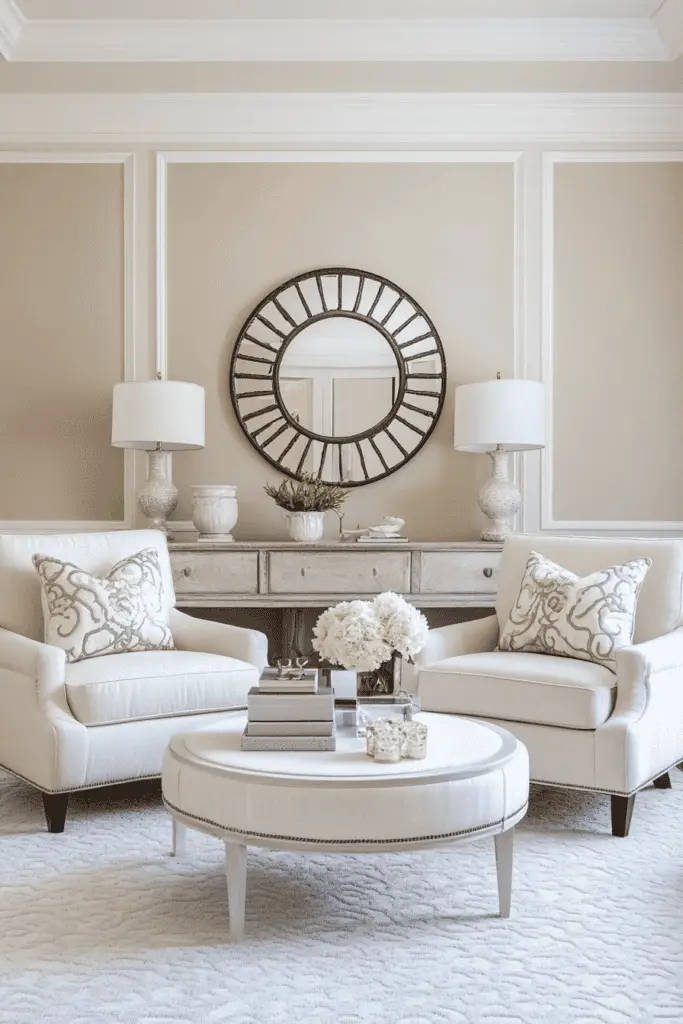
Neutral color palettes form the core of minimalist living room design. Shades of white, beige, gray, and taupe create an open, serene atmosphere that helps the space feel larger and more peaceful. These colors reflect light, enhancing the brightness of the room and making it feel airy and spacious. Neutral hues also serve as the perfect backdrop for other design elements, ensuring that every piece in the room stands out without clashing.
2. Focus on Simple, Functional Furniture
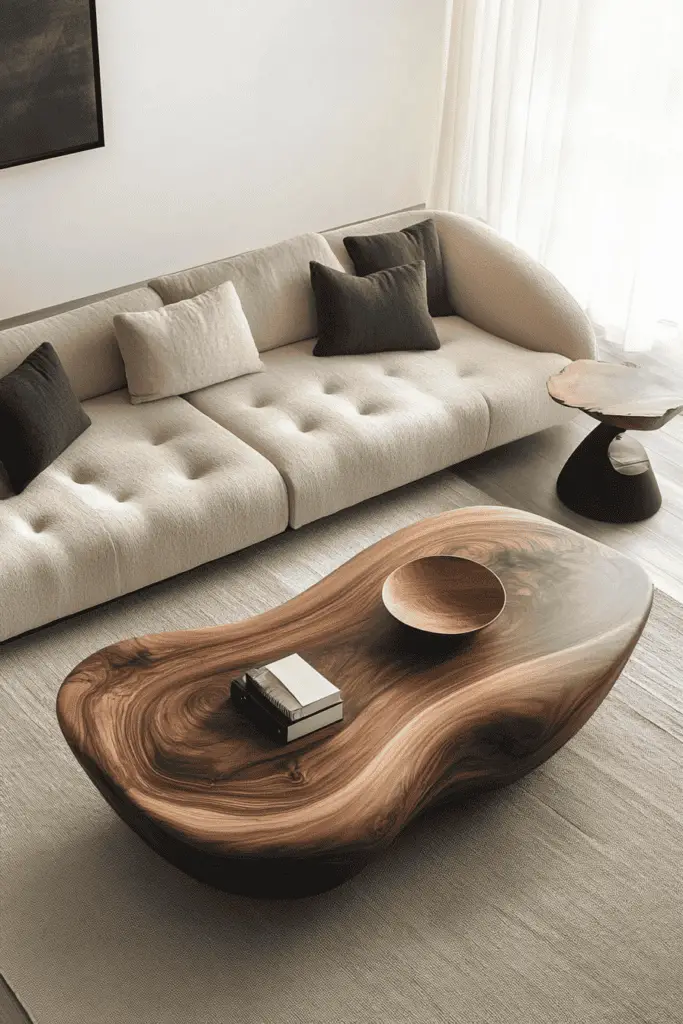
In a minimalist living room, furniture should be simple yet functional, focusing on clean lines and a modern silhouette. Avoid ornate pieces or excessive details that can make the room feel cluttered. Opt for low-profile furniture, such as streamlined sofas or tables with subtle curves, which keep the space feeling open and unobstructed. Multi-functional furniture, like storage ottomans or minimalist media units, can provide necessary storage without taking up extra space.
3. Open Shelving for a Clutter-Free Look
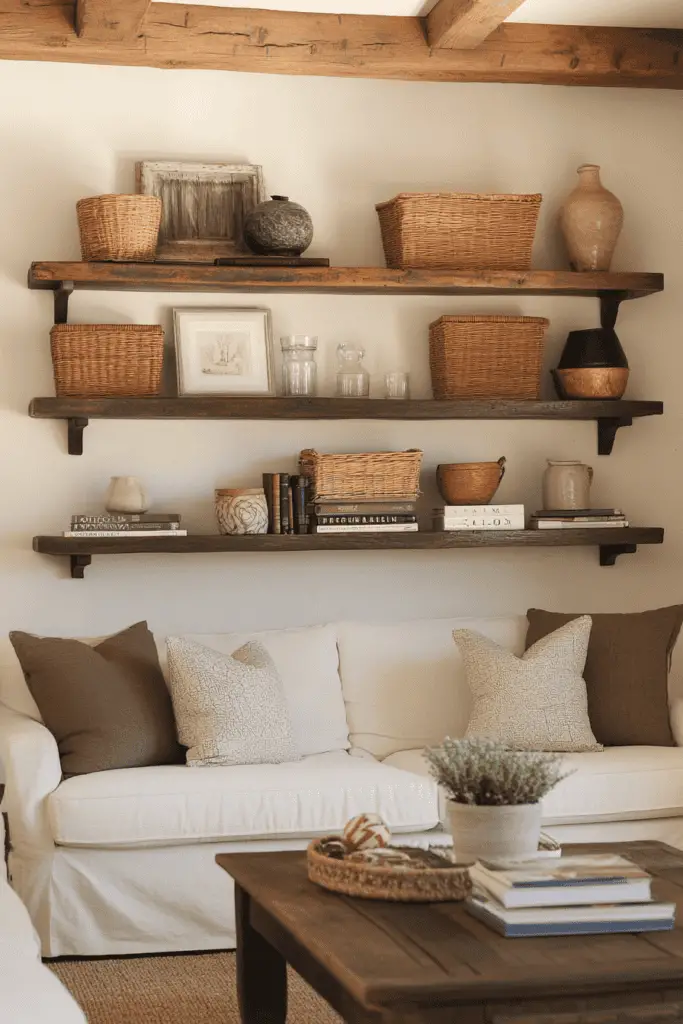
Open shelving is a popular choice for minimalist living rooms because it allows you to display a curated selection of decorative items while maintaining an uncluttered space. The key is to keep the number of items displayed to a minimum—choose a few well-selected pieces that add personality without overwhelming the space. Open shelves also create an open and airy feel, drawing the eye upward and making the room feel larger. This type of shelving is particularly effective in small living rooms where every inch of visual space matters.
4. Maximize Natural Light
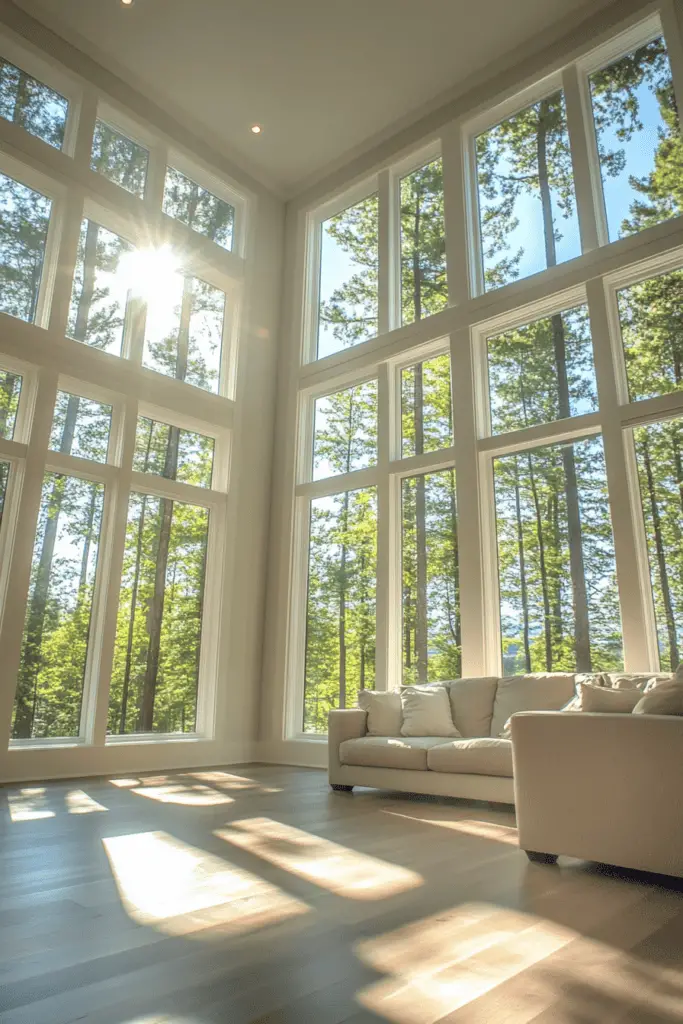
Natural light is a hallmark of minimalist design, contributing to the open and spacious vibe of a room. Large windows, minimal window treatments, and open spaces allow natural light to flood the room, creating a bright and inviting atmosphere. The more light you can let in, the larger and airier the room will feel. Not only does natural light help to visually expand the space, but it also promotes a sense of well-being by connecting the indoors to the outside environment.
5. Use Statement Art Pieces
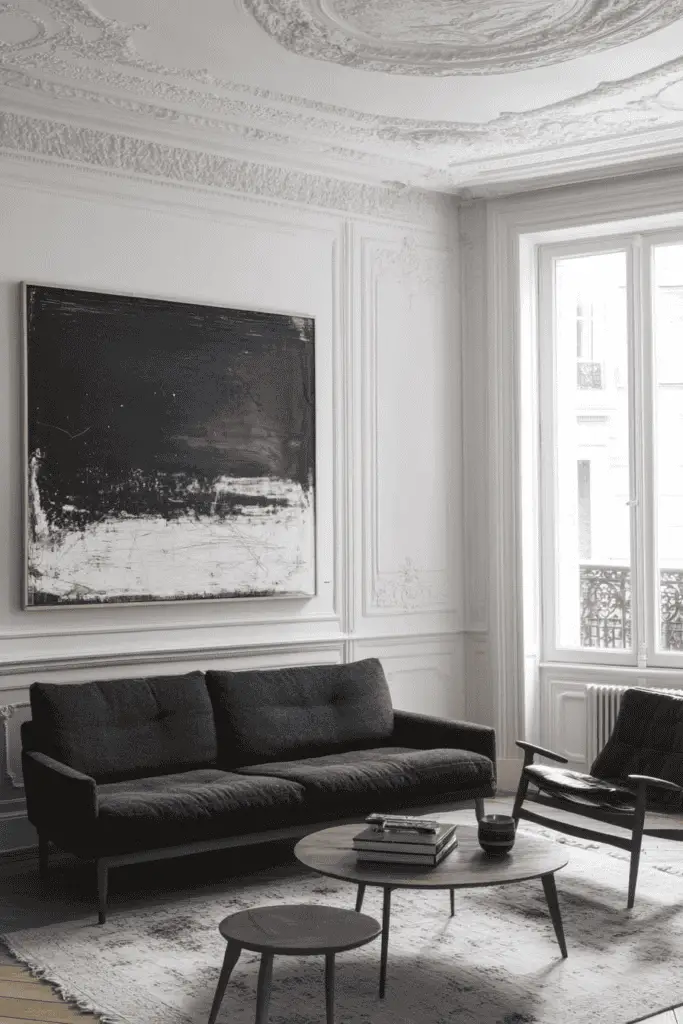
In a minimalist living room, art should be chosen carefully to complement the room’s calm aesthetic without overwhelming the space. A single large statement piece, such as an abstract painting or a monochrome print, can serve as a focal point without crowding the room. By limiting the number of art pieces on the walls, you allow the artwork to breathe and make a more significant impact. This approach keeps the room feeling uncluttered while still giving it personality and visual interest.
6. Minimalist Lighting Fixtures
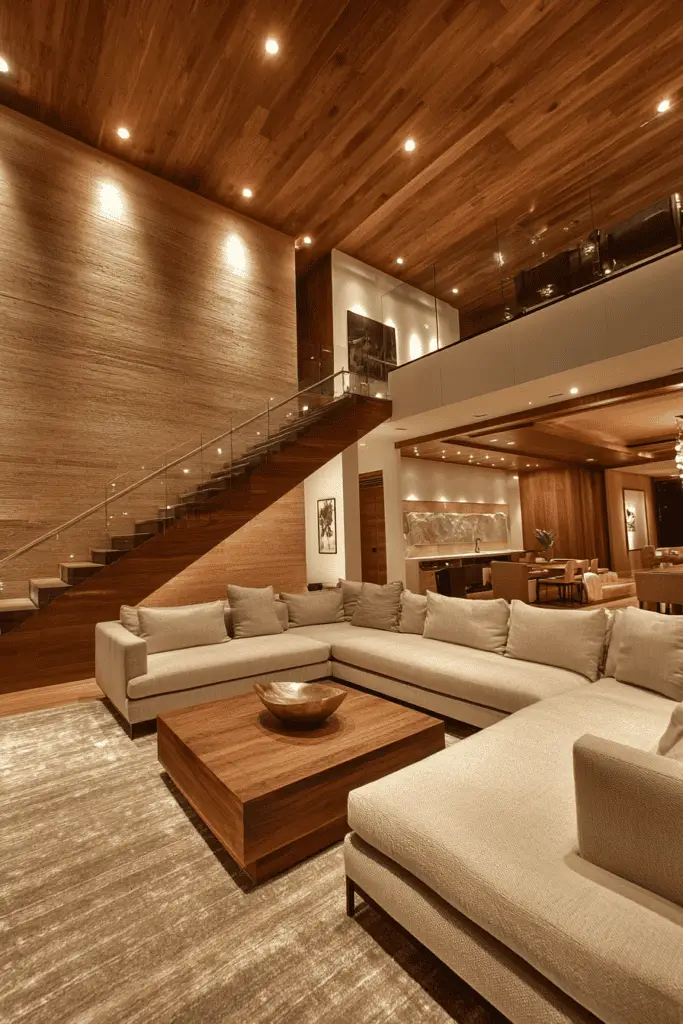
Lighting in a minimalist living room should be both functional and visually unobtrusive. Simple pendant lights, recessed lighting, and sleek floor lamps all contribute to a minimalist aesthetic while providing ample illumination. Avoid overly ornate fixtures and opt for designs with clean lines and subtle details. The right lighting can enhance the room’s open feel by highlighting key features without overwhelming the space.
7. Floating Furniture for Open Floor Plans

Floating furniture, or arranging pieces away from walls, can make your minimalist living room feel more expansive and open. This technique helps to avoid a cramped layout and creates a sense of movement and flow within the room. By leaving space around each piece, the room retains its open, airy feel while still offering functionality. Floating furniture is especially effective in open-plan spaces, where you can create distinct areas without walls or partitions.
8. Add Indoor Plants for Subtle Greenery
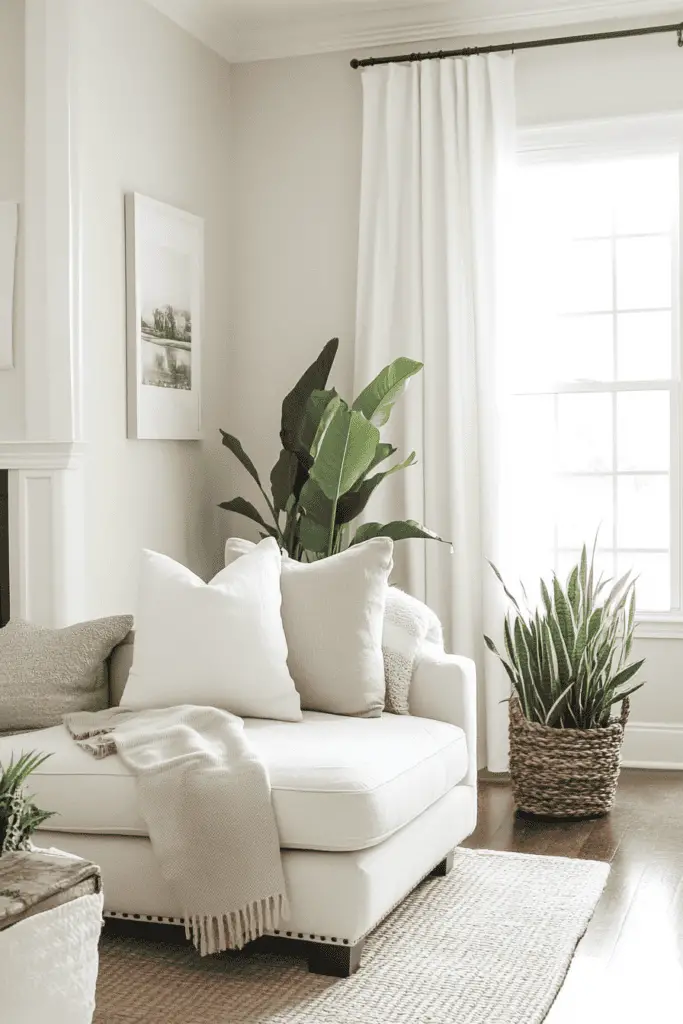
Indoor plants are an excellent way to bring life to a minimalist living room without overwhelming the space. Select plants with clean, architectural shapes like snake plants, succulents, or ferns to maintain a simple and stylish aesthetic. The greenery contrasts beautifully with the neutral tones of the room, adding texture and a touch of nature. A few well-placed plants can provide warmth and a sense of calm, making the room feel more inviting and connected to the outdoors.
9. Monochromatic Color Scheme
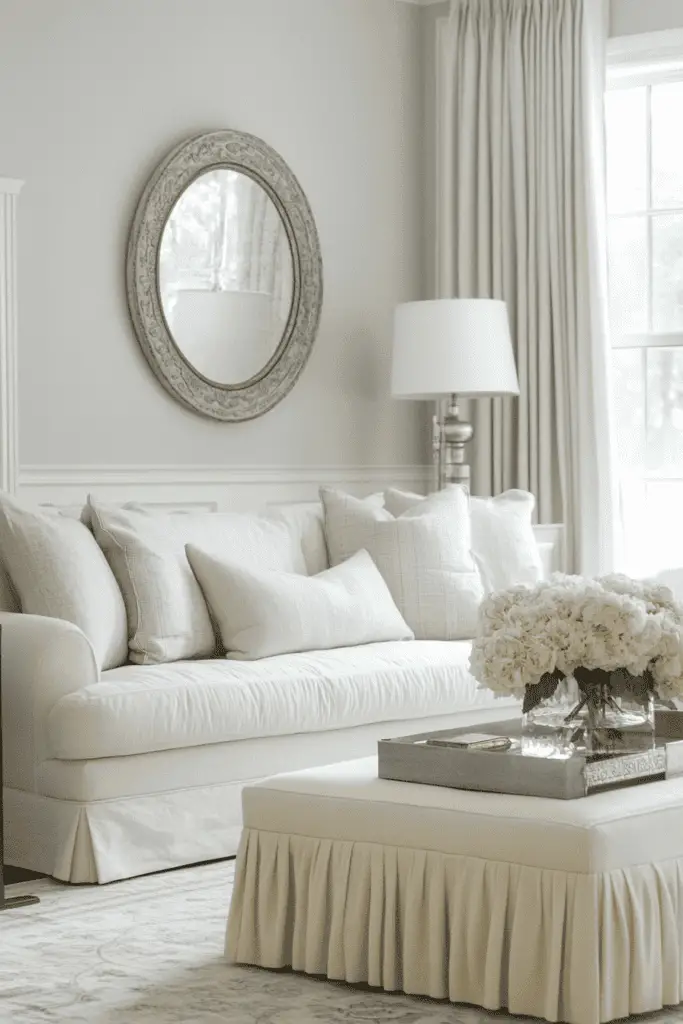
A monochromatic color scheme, where different shades of a single color dominate the room, can create a sense of unity and harmony in a minimalist living room. This approach minimizes visual distractions while making the space feel cohesive and polished. To keep the room from feeling too flat, incorporate variations in texture—such as soft textiles, smooth furniture, and matte finishes on the walls. A well-executed monochromatic palette can give the room a sophisticated, curated look that feels both modern and timeless.
10. Minimalist Wall Treatments
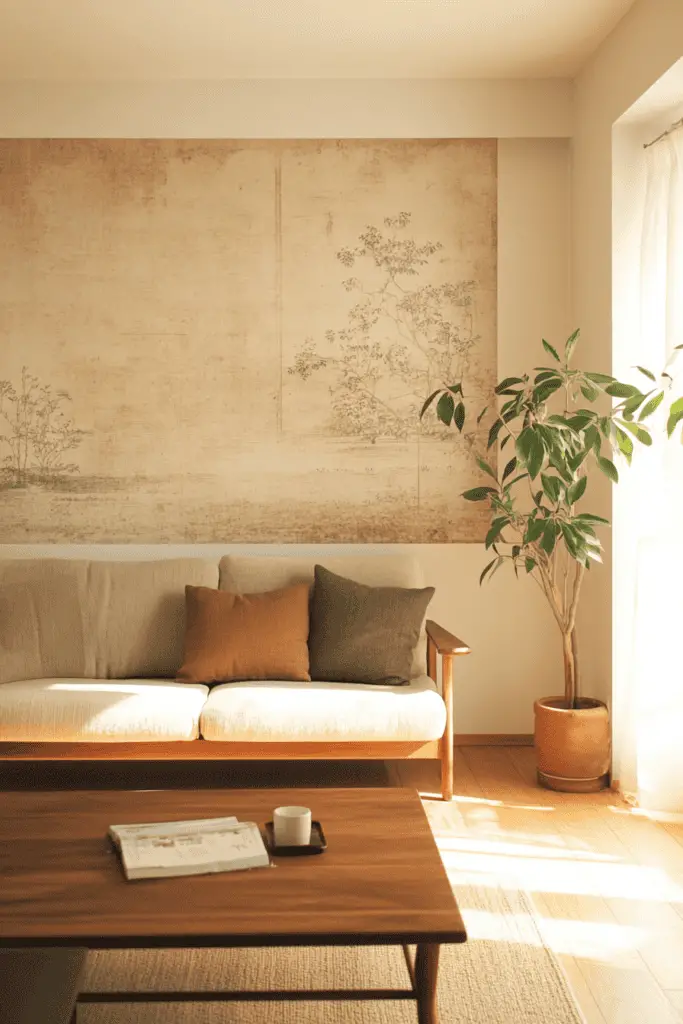
Wall treatments in a minimalist living room should be subtle and unobtrusive, focusing on creating a soft backdrop for the rest of the space. Opt for neutral-colored paint or light-colored wallpaper with simple patterns or textures that don’t distract from the room’s overall design. The goal is to create a serene, blank canvas that highlights the furniture and key decor elements without overwhelming the senses. Smooth, matte finishes work particularly well to maintain a calm, cohesive atmosphere in the room.
11. Incorporate Low-Profile Furniture
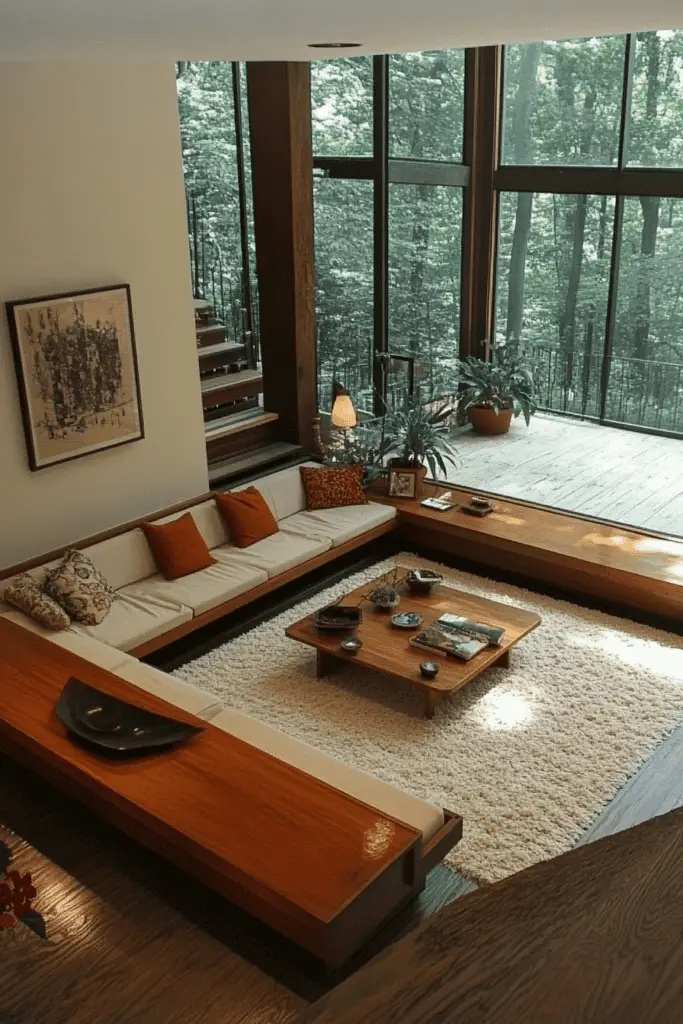
Low-profile furniture is ideal for creating a minimalist living room with an open and airy feel. Sofas, chairs, and tables with lower seating or smaller proportions help the space feel less cluttered while allowing the floor and walls to remain visible. This technique is especially beneficial in smaller spaces, where maintaining a sense of openness is crucial. Low-profile pieces also have a sleek, modern aesthetic, contributing to the overall minimalist vibe.
12. Create a Balanced Layout
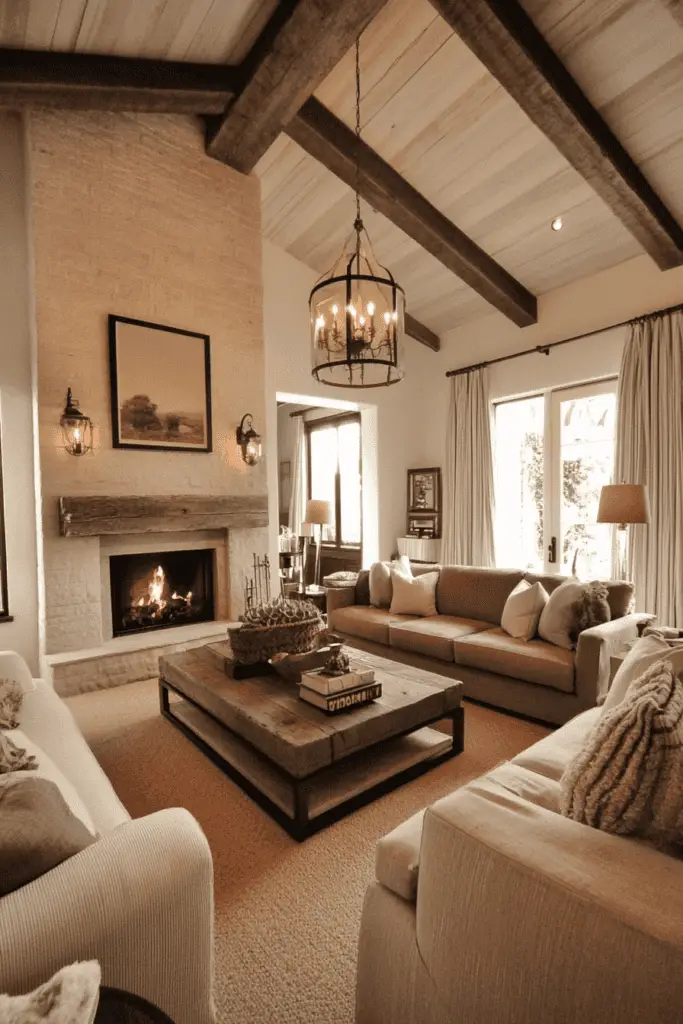
A balanced layout is key to achieving harmony in a minimalist living room. The goal is to arrange furniture and decor in a way that feels symmetrical and ensures flow throughout the room. Place larger furniture pieces like sofas or coffee tables centrally and leave enough space around them to avoid clutter. A well-balanced layout not only enhances the visual appeal but also makes the room feel inviting and functional.
13. Use Multi-Functional Furniture
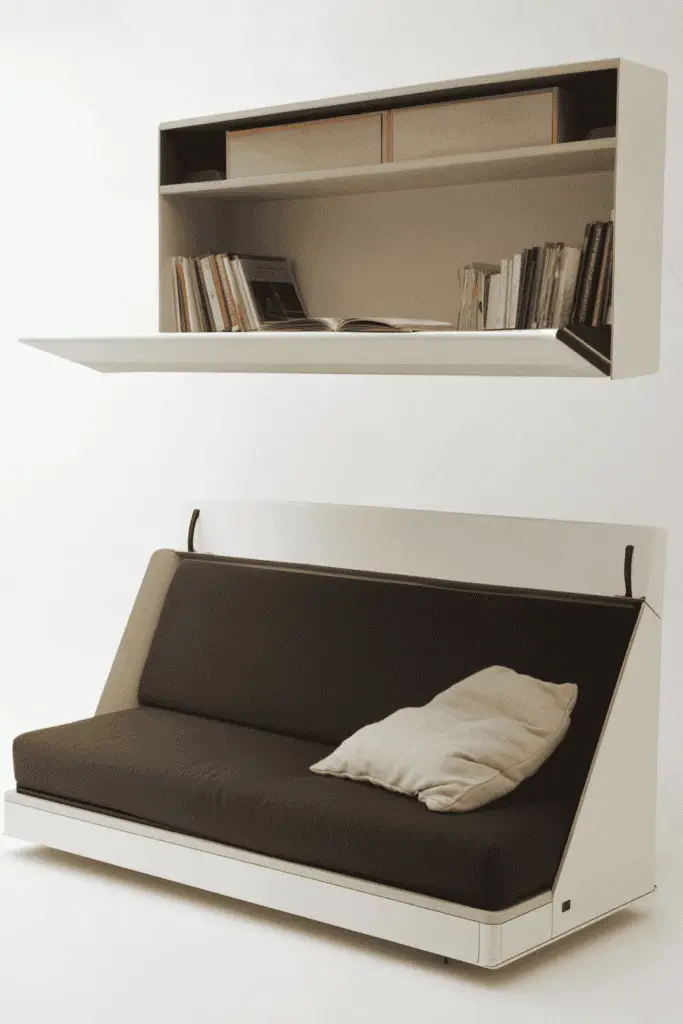
Multi-functional furniture is a game-changer in minimalist design, helping you maintain both style and practicality. Furniture that serves more than one purpose—like a sofa that turns into a bed or a coffee table with built-in storage—helps minimize clutter while meeting everyday needs. This type of furniture is particularly useful in smaller spaces where maximizing functionality is key. Additionally, minimalist multi-functional furniture often boasts a sleek, simple design that fits seamlessly into the overall aesthetic.
14. Minimalist Rugs for Subtle Texture
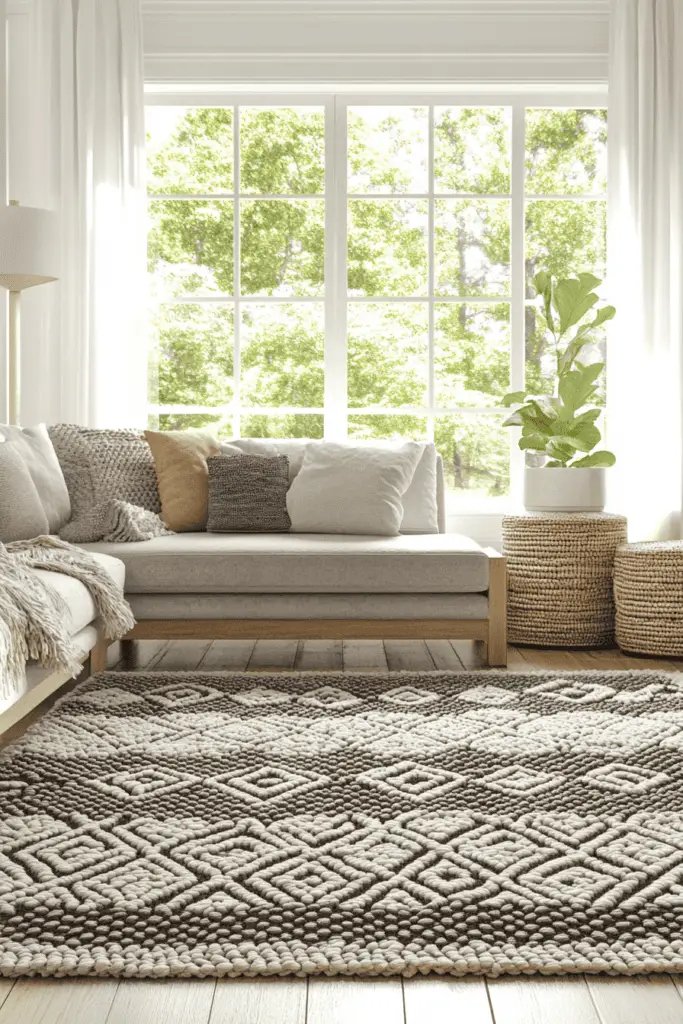
In minimalist living rooms, rugs should add texture and warmth without overpowering the space. Choose neutral-toned rugs with simple, geometric patterns or flatweave designs to complement the room’s sleek aesthetic. A well-placed rug can also define different areas of an open-plan room, creating a cozy, grounded atmosphere. Keep the rug size proportional to the furniture layout to maintain balance and harmony within the space.
15. Hidden Storage Solutions
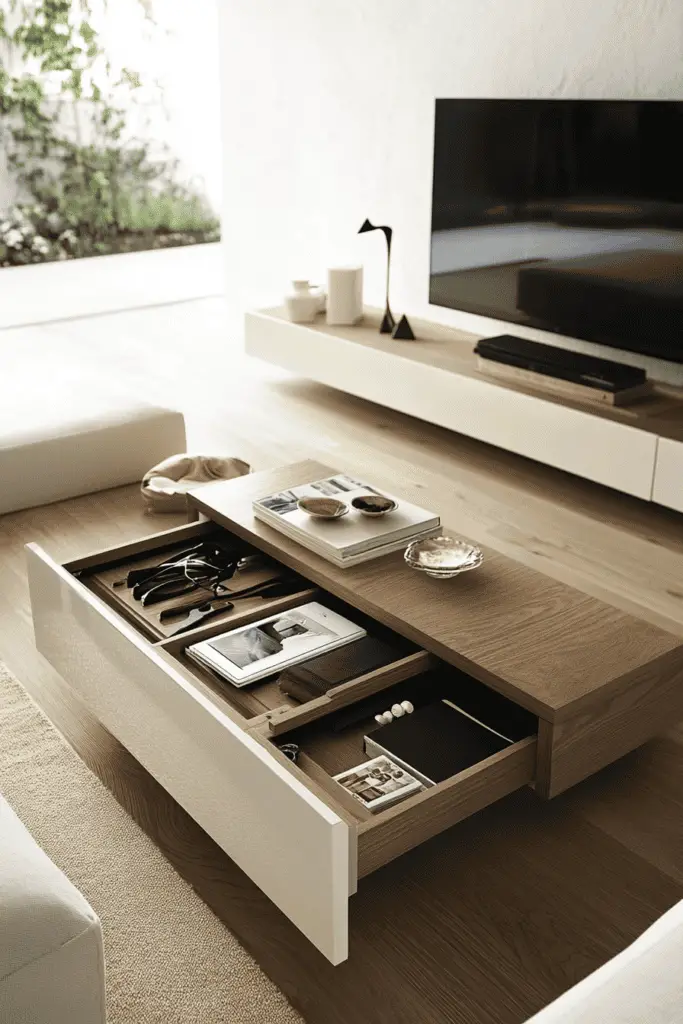
In a minimalist living room, hidden storage solutions are essential for keeping the space clean and uncluttered. Furniture pieces with built-in storage, such as a media unit with concealed compartments or a coffee table with drawers, help you store items out of sight. This type of storage eliminates the need for additional bulky furniture and maintains the clean, streamlined aesthetic. Hidden storage can also serve as a way to keep everyday essentials, like remote controls or books, easily accessible without disrupting the room’s simplicity.
16. Streamlined Entertainment Units
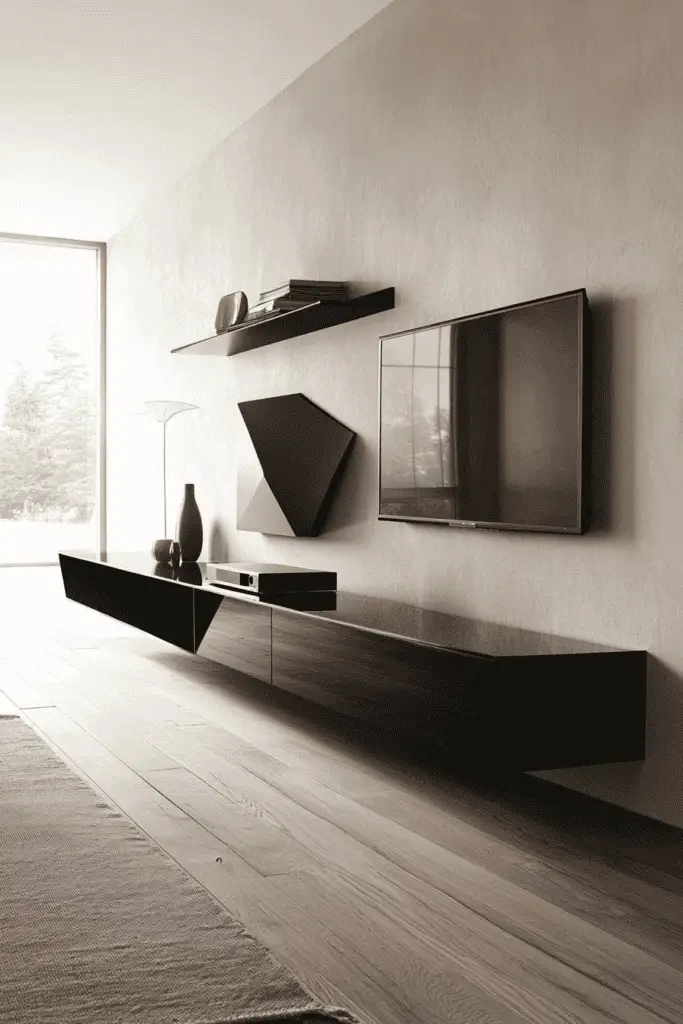
Entertainment units in a minimalist living room should focus on simplicity and functionality. Opt for sleek, low-profile media units that offer clean lines and hidden compartments to store electronic devices and cables. These units help maintain a tidy, uncluttered look while still providing space for your television and audio equipment. Choose designs with minimalist aesthetics, such as floating units or simple, geometric shapes, which align with the overall style of the room.
17. Clean Window Treatments
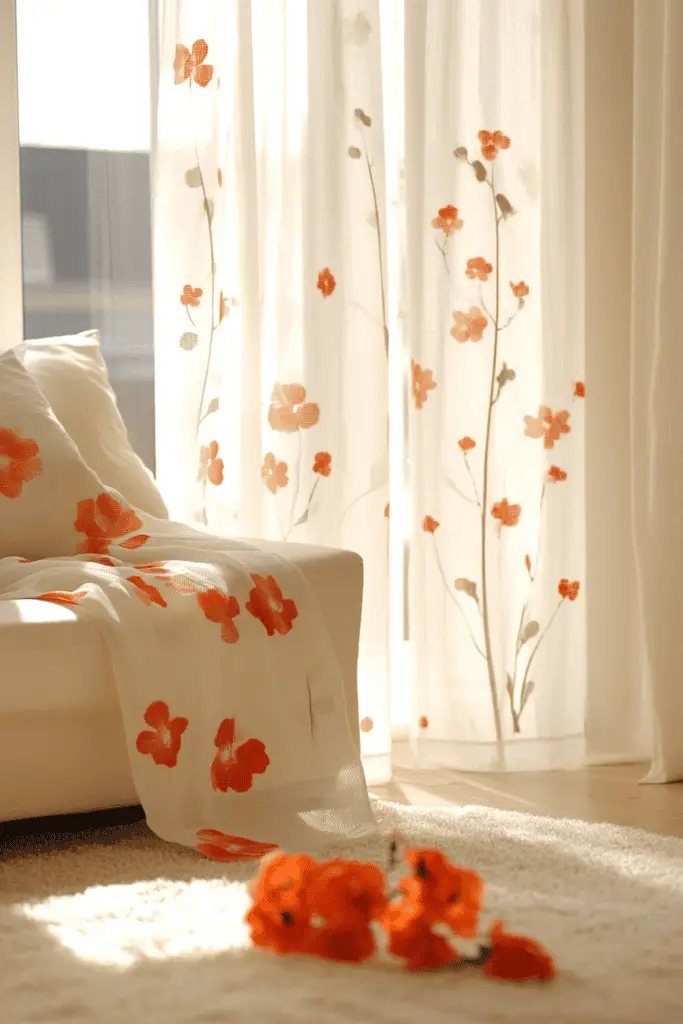
Window treatments play a key role in maintaining the minimalist look of a living room. Opt for simple, unadorned curtains or shades in neutral tones that complement the room’s overall color palette. Avoid heavy drapery or intricate patterns that can make the space feel cluttered. Light, sheer curtains are perfect for allowing natural light to fill the room while preserving privacy. Clean lines in window treatments enhance the open and airy feel of the room.
18. Accent Pieces with Purpose
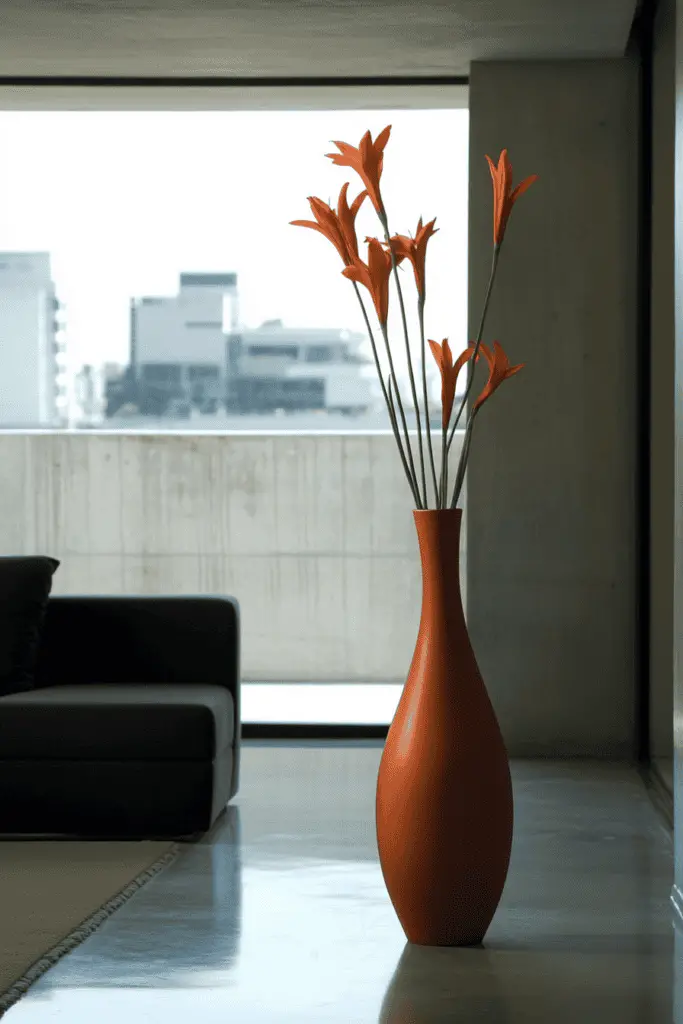
Minimalism doesn’t mean a lack of decoration, but it does mean choosing accent pieces that are purposeful and intentional. Each accessory or decor item in the room should serve a clear function or contribute to the overall aesthetic. For instance, a well-placed vase, a single sculpture, or a thoughtfully chosen piece of art can add personality without overwhelming the space. The key is moderation—too many accessories can make a minimalist living room feel cluttered.
19. Incorporate Minimalist Mirrors
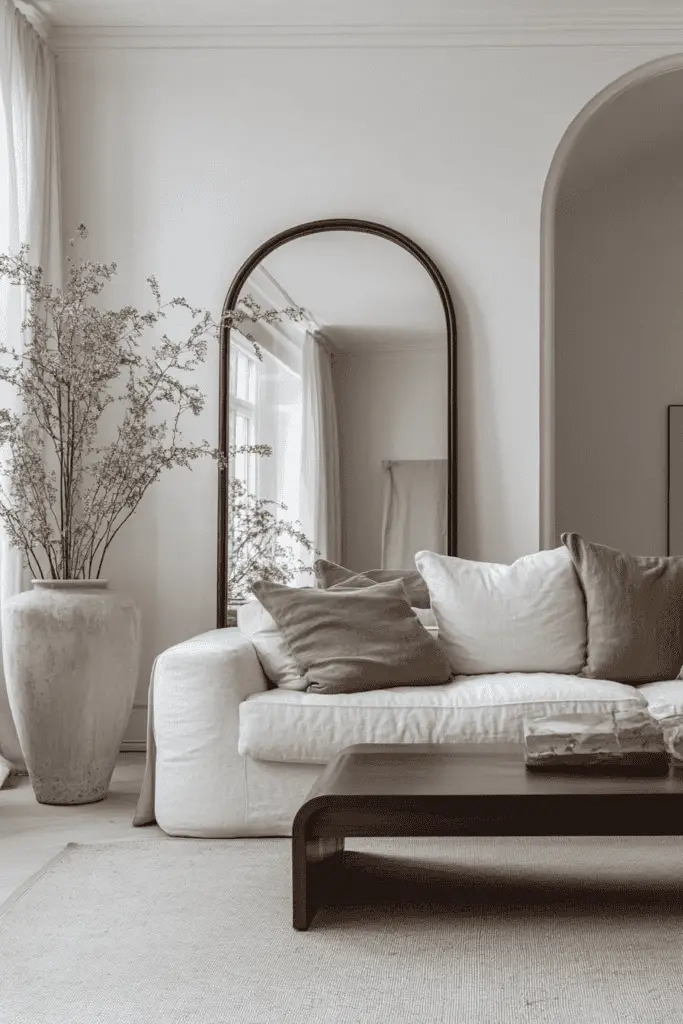
Mirrors are an excellent way to enhance the minimalist design of a living room by reflecting light and creating the illusion of more space. Choose mirrors with clean, simple frames that match the room’s color palette and style. Full-length mirrors or statement mirrors with a minimal design can also act as focal points in the room without overwhelming the space. Mirrors not only increase the sense of openness but also contribute to a modern, sophisticated atmosphere.
Conclusion
Creating a minimalist living room is all about embracing simplicity, functionality, and intentional design choices. By focusing on neutral color palettes, low-profile furniture, and practical storage solutions, you can craft a space that feels open, serene, and organized. Incorporating elements like statement art pieces, soft textiles, and natural light further enhances the room’s aesthetic, allowing you to enjoy a calm, clutter-free environment. Whether you’re in a small space or looking to refresh your current living room, minimalist design offers both style and practicality without compromising on comfort.
If you’re inspired by these ideas and ready to create your own minimalist haven, explore more design tips, or consider contacting us for personalized consultations to bring your vision to life.
Leave a Reply